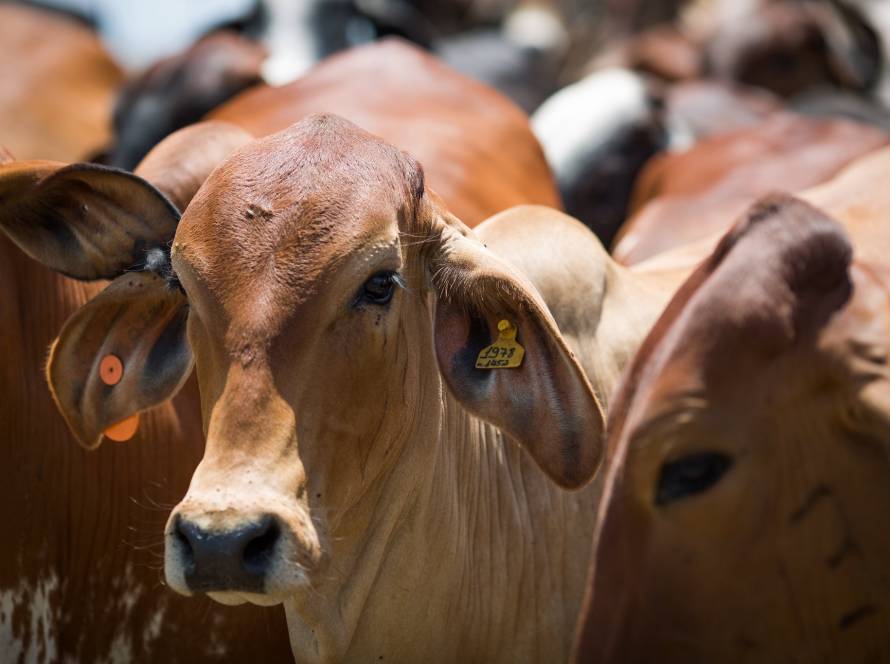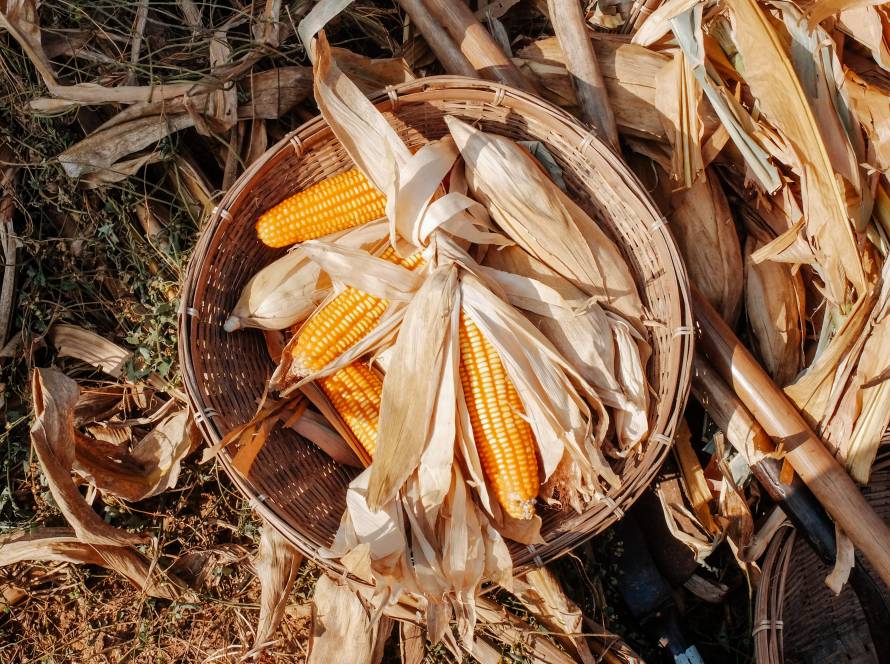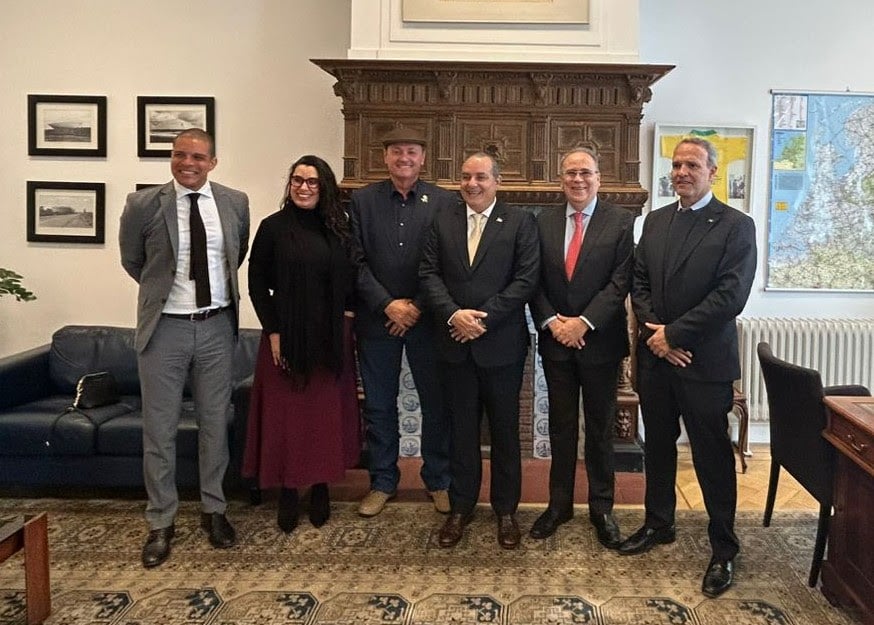The 24/25 soybean harvest in Mato Grosso has been marked by challenges for the state's producers. After a start to planting was hampered by delayed rainfall, the weather also imposed even greater difficulties during the harvest period, with heavy rains that compromised the quality of the grains and work in the fields. In addition, problems with logistics and storage further aggravated the situation, causing long lines at warehouses and affecting the flow of production.
Infrastructure problems became even more evident in this scenario of climate instability, as explained by the vice-president of the Mato Grosso Soybean and Corn Producers Association (Aprosoja MT) and producer in Gaúcha do Norte, Luiz Pedro Bier, who emphasizes that the lack of structure has been one of the main factors hindering the flow of production.
“The lack of infrastructure in the state of Mato Grosso, and I say mainly in the eastern region because that is where I plant, is enormous. The lack of warehouses means that trucks wait two to three days in line to unload. The truck bed ends up being a storage tool for the rural producer, who needs to hire two or three times more trucks than would actually be necessary because of the lines. And there is also the bottleneck of unpaved roads, which are still quite common in the state. Although in recent years we have had a large amount of asphalt on roads being built, our need is still far below the ideal,” explains the producer.
He emphasizes that the financial impact of this scenario falls directly on producers. “Trucks charge more because they are stuck in line waiting to unload. So this is a cost that is directly borne by producers, and they feel it on a daily basis.” Luiz Pedro Bier emphasizes that greater investment in infrastructure is necessary. “We need more investment in asphalt, railways, waterways and also in financing lines for the construction of warehouses. Most of the warehouses are in the hands of three large companies, which limits storage capacity and makes it difficult for producers to operate,” he said.
According to the Mato Grosso Institute of Agricultural Economics (IMEA), as of February 20, 2025, Mato Grosso had harvested 50,08% of the soybean crop, a significant delay compared to the same period last year, when 65,07% had already been harvested by February 19, 2024. The difference only narrowed in the first week of March, when the rain gave a break in some regions and producers were able to speed up the harvest pace. As of March 7, 2025, the harvest reached 91,84% of the planted area, but logistical and storage challenges continue to put pressure on producers.
Alexandre Falchetti, coordinating delegate of the Aprosoja MT nucleus in Marcelândia, reports that the situation in the northern region was especially challenging due to the heavy rains.
“Regarding our 2025 harvest, the beginning of it was quite turbulent. We had a lot of rain in January, which harmed the producers who plant cotton here in the region. And the first soybeans that were harvested had a lot of damage problems. This type of rain is not common here in January, it is more common in February. It was a surprise for us. So much so that the rain forecast was for February and it all came in January, so it gave everyone a scare here. In addition, our logistics are very complicated, our region suffers a lot from a lack of warehouses, which generates long lines to unload. Trucks wait 24, 36 hours in line to unload a load and often still can't because the warehouses are rejecting loads with seeds.”
The producer points out that the delay in the delivery of inputs also caused difficulties for the corn harvest. “We had delays in the delivery of fertilizers, which is making application difficult, since the corn was planted in a short period of time.”
In the west of the state, the situation was also challenging. Helena Maria Sandri, the coordinating delegate for Diamantino, points out that the quality of the grains was directly affected by the prolonged rains. “During this year’s harvest, we suffered from prolonged rains, which caused a decline in the quality of the soybeans and the quality of the grains, which already left the grains more damaged. In addition, there was a strain on logistics due to the 24 to 48 hour waiting times at the warehouses. The short period of sunlight and the lack of trucks available for transportation further aggravated the situation, resulting in significant losses.”
In the southern region, Rafael Marsaro, coordinating delegate for Campo Verde, emphasizes that the excess rain had a direct impact on logistics and storage. “Although January began with good harvest conditions, 2025 is proving to be a challenging year. The lack of structure to handle the volume of production and wet grains affected drying and storage capacity. This resulted in crop losses and greater pressure on warehouses, which were unable to receive and dry the grains quickly enough.”
In the eastern region, the scenario was no different. Producer Jean Marcell Benetti, coordinator of Paranatinga, explained that the rains in the region damaged both the crops and the city. “The first crops harvested in January had many problems with damaged grains due to the constant rain. We had farms that recorded 200 millimeters of rain in a single night, it was a very large volume. In the municipality itself, there was a flood in the city, which had not happened in almost 20 years.” The producer also explained that logistics in the region was another critical point. “Paranatinga is a very large municipality, and the city government does not have the structure to meet all the transportation demands. We had several mud holes that made it difficult to transport the harvest. Producers had to spend money out of their own pockets to fix some stretches to try to solve the road problem.”
In the Arinos Valley, in the mid-north of the state, the lack of storage is also a critical challenge, as explained by Jaqueline Piovesan, coordinating delegate of the regional center.
“Here in the region, we have suffered greatly from a lack of warehouses. Although there has been an expansion in the last two years with the opening of some new units, it is still insufficient to meet the production, which has also been growing at a faster pace than the availability of storage. This has undoubtedly been a difficulty here, especially because in our region, most producers still depend on third-party warehouses and do not have their own warehouse,” explained the producer.
With the need to use third-party warehouses, Jaqueline explains that producers have also been suffering from the incidence of rain from planting to harvest due to excess moisture. “The region has suffered both from a delay in the onset of rain, which ended up hindering planting, and from excessive rain now during the harvest period. We have had problems with damage and excessively wet grains, and third-party warehouses have refused to receive substandard products, which leaves producers who do not have their own warehouses without any options. As if that were not enough, the rain is also destroying several roads and filling landfills, which makes several roads that provide access to properties where soybeans are planted inaccessible, and there are many producers who simply could not reach the fields to harvest with machinery or, if they did harvest, could not receive a truck to load them,” she reported.
Difficulties in storage and flow also have an impact on exports. According to IMEA, from January to February 2025, Brazilian soybean exports totaled 7.5 million tons, a drop of 20.77% compared to the same period last year. In Mato Grosso, exports totaled 2.65 million tons, a reduction of 24.43% compared to 2024.
Given this scenario, producers continue their work, despite the climatic and logistical challenges, which increase production costs and impact crop profitability. Meanwhile, Aprosoja MT continues to work to find solutions to these challenges.




